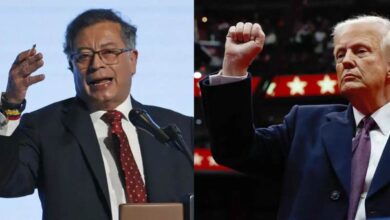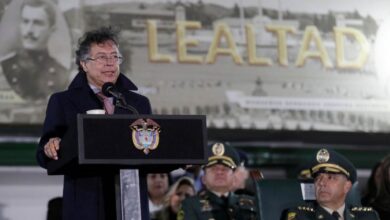Details of the Visit of the European Commissioner for the Environment to Latin America
The European official visited Colombia and Brazil to discuss relevant issues on the environmental agenda on a tour that continues through Argentina and Uruguay.

Photo: TW-V Sinkevicius
LatinAmerican Post | Luis Ángel Hernández Liborio
Listen to this article
Leer en español: Detalles de la visita del comisario europeo de Medio Ambiente a Latinoamérica
The European Commissioner for the Environment, Oceans and Fisheries, Virginijus Sinkevičius, is visiting Latin America with the mission of preparing the topics of the European Union's environmental agenda for Latin America for COP 15, which is being held this year. His visit has also served to evaluate the progress in environmental terms in the face of the challenges facing the region, especially in terms of biodiversity and the protection of its large regions rich in it.
Colombia, its commitment towards 2030
The European official, in charge of the community environmental portfolio, visited Colombia from April 25 to 27. During his visit, he met with the President of the Republic, Iván Duque, and high-level officials of the country, including: the vice president and chancellor, Marta Lucía Ramírez, and vice ministers of portfolios related to tourism, trade, foreign relations and rural development. President Duque and Commissioner Sinkevičius gave a joint conference. There, the Colombian president endorsed his country's commitments to actions to mitigate climate change and protect the environment, among them he highlighted the commitment to reduce 51% of greenhouse gas emissions by 2030 and be a carbon-neutral country by 2050.
This year is no coincidence, it is in line with the goal of the European Green Deal of achieving carbon neutrality by 2022 through economic, political, social measures, technological actions and international commitments. For his part, the commissioner highlighted the importance of Colombia in biodiversity issues, for which he thanked the efforts in protecting the environment. He announced that the European Union will invest 75 million euros in Colombia to support green industries and other social and economic initiatives that help achieve the goals set jointly. Of this amount, 10 million euros will be allocated exclusively to the protection of biodiversity. The visit has been nothing more than a diplomatic one, only to endorse what was signed and agreed upon in previous years and weeks.
Brazil, the Amazon is its main mission
The European Union has been critical of Jair Bolsonaro's negative position on environmental issues. The Brazilian president has been skeptical and at times indifferent to the challenges in this area facing his country and the world. The European official has been one of the most critical of Brazil's positions, it has been proposed in the European Union to ban the import of Brazilian products that come from deforested areas, since, according to the World Wildlife Fund (WWF), 17% of European imports have this origin. Therefore, the main concern of Europeans in the South American giant is everything related to the Amazon and its biodiversity. The illegal felling of trees and the fires that also harm it have motivated the European Union to redouble its efforts in this region of the world that is shared by several South American countries, although most of it is located in Brazilian territory.
Brazil presents a significant delay in environmental protection, while Colombia and most of the world are aligned with the goals promoted by the European Union. The Brazilian government extended its deadline to reduce its polluting emissions until 2060, in addition to using as a pretext the scarce financing for developing countries that (they calculate) require an investment of $100 billion dollars a year to deal with the problem. The visit of the Latvian official took place mainly with Brazilian businessmen and authorities, in addition to meeting with a commission from the Federal Senate, concluding his visit on Saturday, April 30. To close the visit that ends on May 4, the European commissioner will travel to Argentina and Uruguay.
You can also read: Tropical forests of Colombia, Brazil, Peru and Mexico: between threat and hope
The challenges towards COP 15
In addition to the protocol visit, commissioner Virginijus Sinkevičius is also on a mission to prepare for the 15th Conference of the Parties (COP 15) to be held this year in China. That is to say, the Conference on Biological Diversity that is part of the UN Convention on Biological Diversity of 1992. The specific effort of this COP is the protection of biodiversity threatened by climate change (this year the Conference on Biological Diversity will be held in Egypt) and illegal logging that produces deforestation and desertification (COP 15 on this problem will be held this year in the Ivory Coast).
The COP 15 aims to promote the protection of at least 30% of the planet's natural areas and rethink the goals for 2030 on deforestation issues. This COP was divided into two parts, the first was held online in 2021, which created the commitment to achieve a global framework agreement on biodiversity, as well as a fund for that purpose. One of the points that stands out the most is the commitment of China, one of the countries that, together with the United States, has been reluctant to collaborate on environmental issues. The second part of the COP will also be in Kunming, China, seeking to formalize the agreements reached last year, considering that the goals set for 2020 in terms of deforestation, avoiding the extinction of species and reducing pollution were not achieved. A meeting that will define the rest of the decade in terms of the environment and that will lay the foundations for what the world hopes to achieve by 2050.





